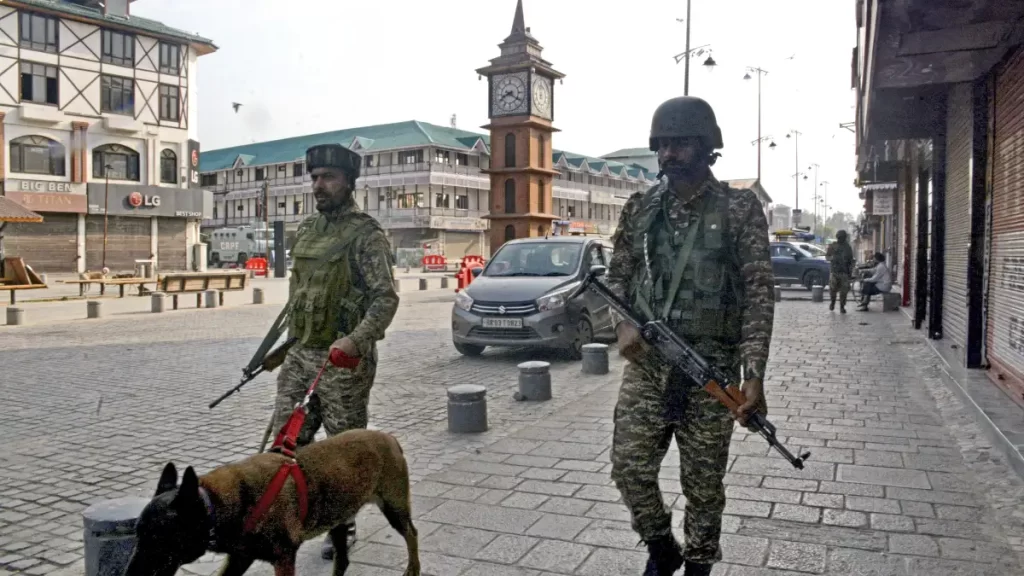In a dramatic escalation of Indo-Pak tensions, India launched Operation Sindoor on May 9, 2025 — a precise and swift counter-offensive aimed at eliminating terrorist launch pads and training camps in Pakistan-occupied Kashmir (PoK). The operation was triggered by a series of drone attacks and coordinated infiltration attempts on Indian military bases in Jammu & Kashmir and Punjab over the past month.
The Indian Army and intelligence agencies have identified five key Pakistani terrorists as the masterminds behind these escalating attacks. These individuals are believed to have orchestrated logistics, recruitment, and cross-border infiltration strategies with the backing of Pakistan’s ISI.
1. Riyaz Naikoo 2.0 – Syed Khalid Bukhari
A former Lashkar-e-Taiba (LeT) commander turned Jaish-e-Mohammed (JeM) strategist, Bukhari has been in hiding since 2023. Indian intelligence agencies believe he played a central role in recruiting foreign-trained fighters and deploying drone attacks. A recent intercept revealed him directing sleeper cells across North India.
“Bukhari has become the nerve center for coordinated terror strikes. His knowledge of Indian terrain makes him especially dangerous,” said a senior official from RAW on condition of anonymity.
2. Haider Mirza – Drone Operations Specialist
A relatively new figure, Mirza is a trained UAV engineer turned militant. He is said to have engineered the recent drone strikes on Indian forward bases in Rajouri and Pathankot. Satellite images released during Operation Sindoor suggest his location was among the first targeted by Indian precision strikes.
3. Talha Shamsi – Financier & Weapons Supplier
Shamsi, affiliated with the banned outfit Hizbul Mujahideen, manages the terror financing pipeline from Dubai and Karachi. The Financial Action Task Force (FATF) had previously flagged suspicious transactions linked to him in 2024. Reports suggest that he recently funded the purchase of high-grade explosive drones used in the attacks.
4. Major Farooq Alam (Retd.) – The ISI Handler
A retired officer of the Pakistani Army, Alam is now alleged to be the ISI’s main handler for cross-border terror activities. His recent activities reportedly involved training new recruits and overseeing operations near Muzaffarabad. Sources say he is the strategic planner behind multiple infiltration routes.
5. Iqbal Sharqi – Propaganda Chief
Sharqi heads the digital propaganda wing that spreads misinformation and radical content targeting Indian youth through encrypted Telegram channels and YouTube shorts. His cyber operations are aimed at recruiting tech-savvy operatives and instigating civil unrest.
India’s Response: Operation Sindoor in Action
On Friday night, Indian Air Force jets launched precision strikes targeting terrorist camps in PoK. According to Defence Ministry sources, at least 10 launch pads were destroyed, with satellite footage confirming significant damage.
“Operation Sindoor was necessary. India will not tolerate acts of terrorism that endanger national sovereignty,” said Defence Minister Rajnath Singh in a press briefing.
Meanwhile, Prime Minister Narendra Modi chaired an emergency security review meeting in Delhi, assuring citizens of India’s preparedness to deal with any further threats. Civil aviation remains suspended over several northern regions, while Indian Railways deployed special Vande Bharat Express services for IPL players and essential personnel.
Geopolitical Implications and Public Sentiment
The United Nations has called for restraint, urging both nuclear-armed nations to avoid escalation. However, global opinion has largely tilted in India’s favor, especially after New Delhi presented satellite evidence of cross-border terror infrastructure at the UN Security Council emergency session.
Public sentiment in India is overwhelmingly in support of the strike. Hashtags like #OperationSindoor and #IndiaStrikesBack have been trending across social media platforms.
Conclusion
Operation Sindoor marks a decisive turn in India’s counter-terrorism strategy — one that directly targets the roots of terrorism rather than its symptoms. As investigations continue, the spotlight remains on these five terrorists whose capture or elimination could be crucial to restoring peace in the region



